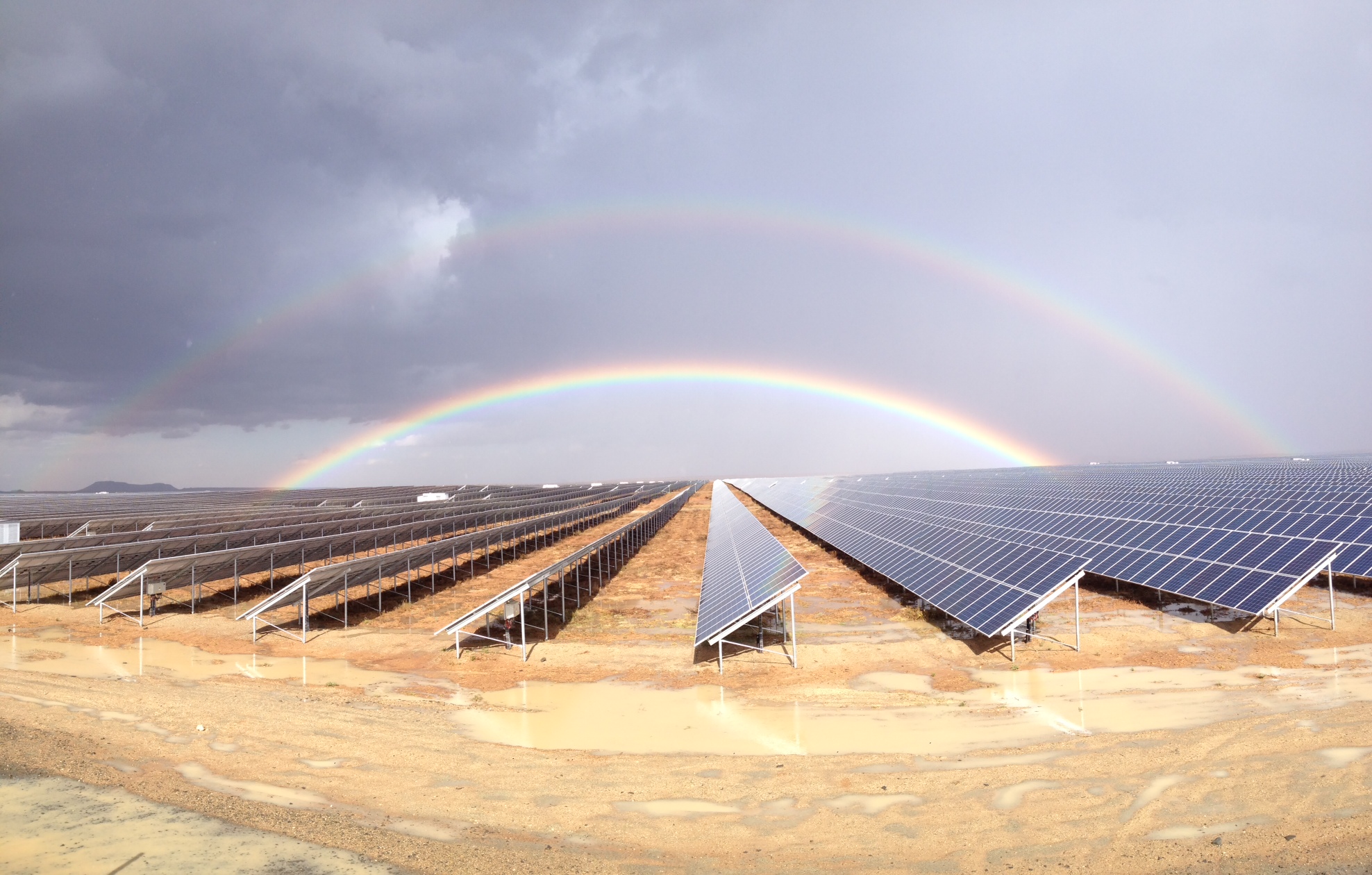PtX Hub in South Africa
Promising starting conditions for becoming a global leader in Power-to-X
Huge potential for renewable energies, vast land areas and global leader in Fischer-Tropsch-Technology: South Africa could play a leading role in Power-to-X. Today South Africa is the biggest emitter of CO2 on the continent and relies on its coal mining industry. But with its abundance of natural resources like platinum and iridium, the high interest across political decision-makers, private businesses and academia, South Africa can make it a likely a place for global Power-to-X production to succeed. In addition, the country can further build on its expertise in Fischer-Tropsch synthesis, a reactor for the synthesis process needed for Power-to-Liquid production that was first commercialised in South Africa. Switching from coal as energy carrier and carbon source to renewable energies and sustainable carbon sources South Africa could tap the potential for reducing CO2 emissions.
A strong shift towards low-carbon or carbon-neutral fuels with Power-to-X is an important and necessary step in reaching South Africa’s climate commitments by 2030 and can help build up green value chains.
Powered by favorable energy market developments
Solar and wind resources are abundant across most parts of South Africa. This, combined with a large land area, mean the cost of renewable energy technology is decreasing substantially every year. At the same time, conventional fossil fuels resources are becoming more expensive to extract and utilise for energy production. Newly built solar PV and wind generators can each produce electricity at a cost well below that of newly-built coal generators.
In leveraging these favourable conditions, the PtX Hub aims to drive the technology uptake and market development for Power-to-X in South Africa. The project plans to work in four key areas:
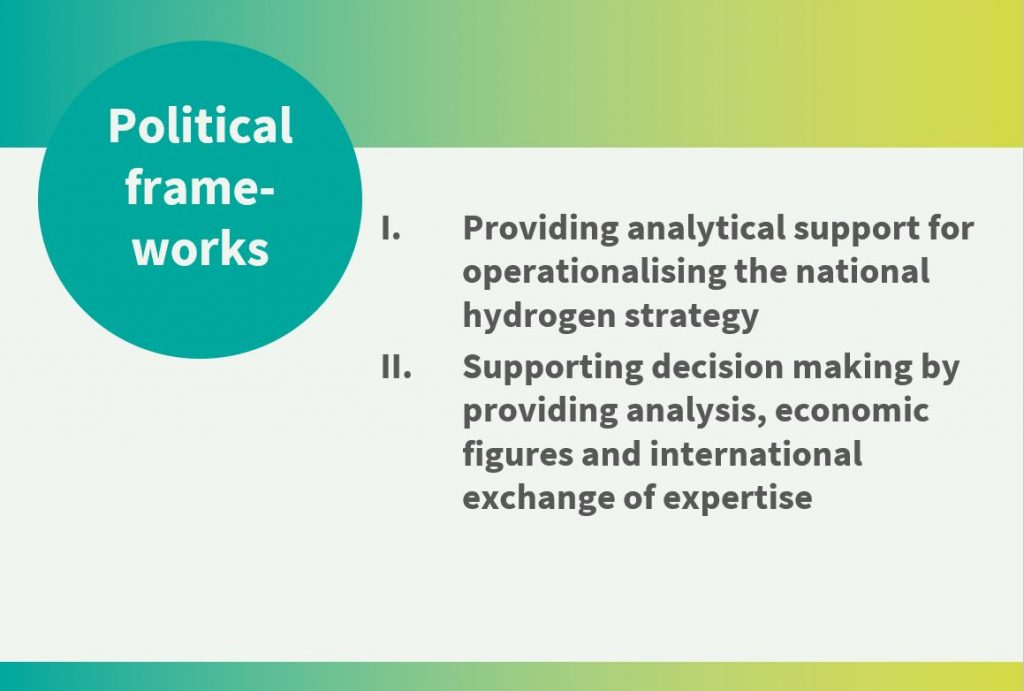
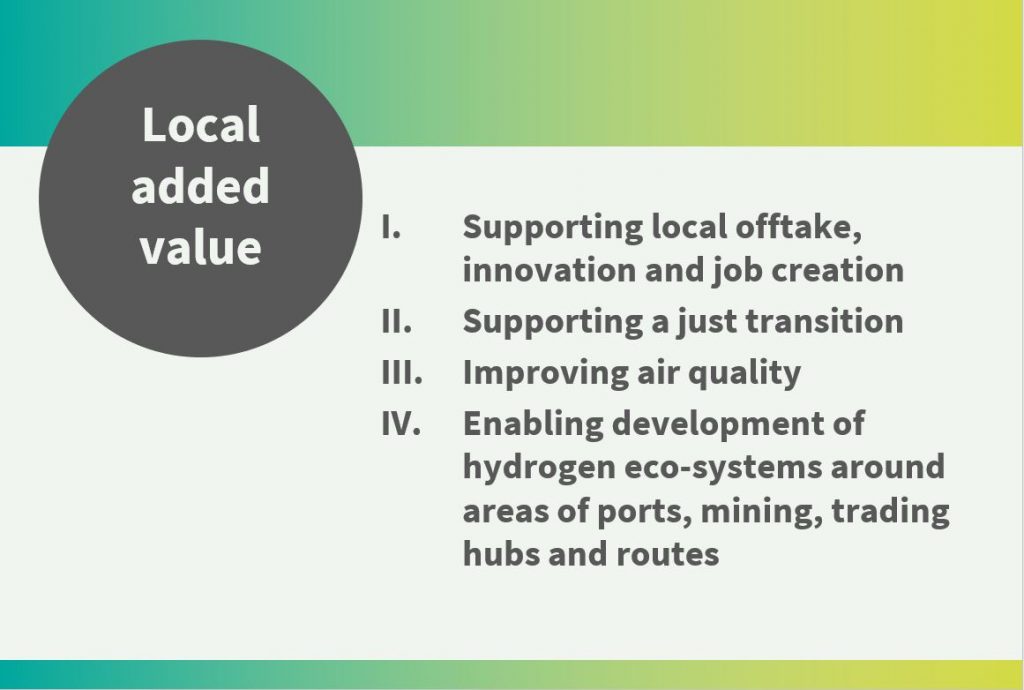
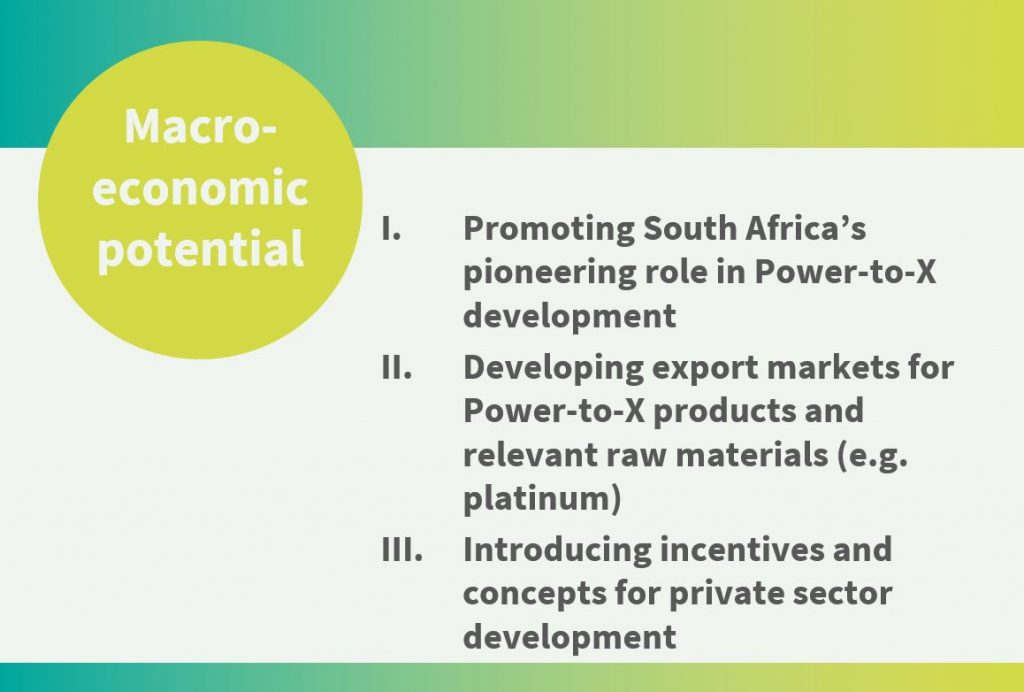
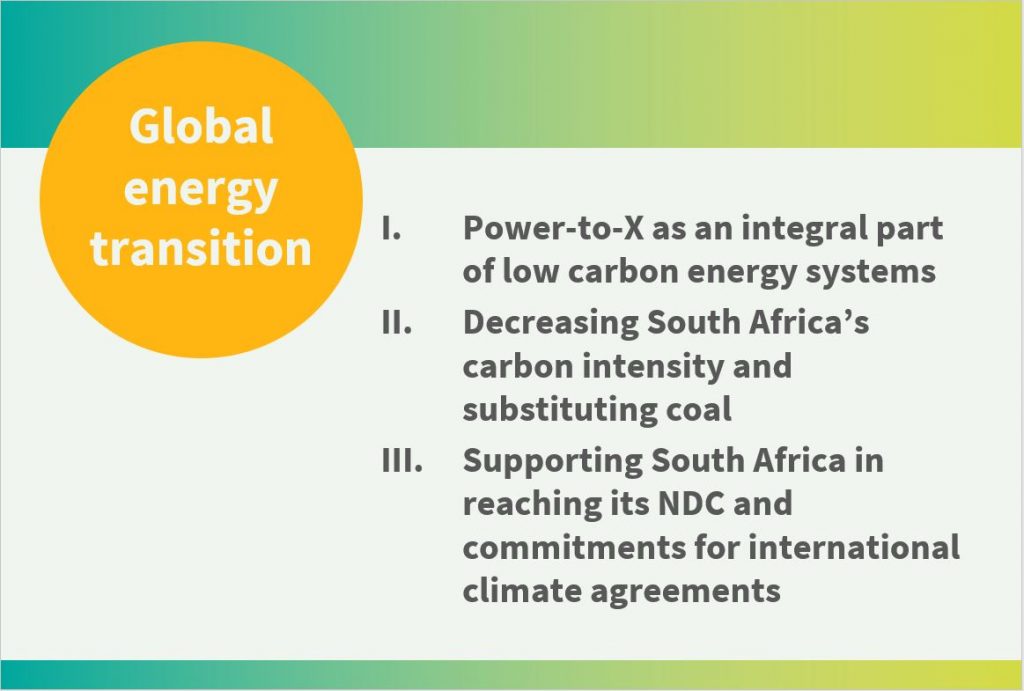
To advance these goals, the PtX Hub in South Africa has, over the past two years, supported the sector by generating research and providing insights to private sector actors (such as project developers) and political decision-makers, enabling informed investment choices, and facilitating political coordination among departments and authorities to develop the enabling environment. Specifically, the PtX Hub in South Africa:
Developed:
- The PTX Business Opportunity Analyser – an interactive tool, designed to identify regions in South Africa with promising business opportunities within the PtX value chain.
- An innovative concept for Power-to-X-Application in the South African maritime sector (jointly developed with decision makers – Link [see blogposts]).
- A set of recommendations taking all scientific research of the current project duration into account (by end of 2025).
Analysed:
- The Demand for Power-to-X Products such as Green Ammonia, Green Methanol, and eFuels for their Use-Case as a Green Maritime Fuel.
- Renewable Resource and Financial Models for Wind and Solar Projects at South African Ports.
- Environmental Safeguards, including Safety Codes and Standards for Power-to-X Projects.
- Sustainable Carbon and Point-Sources for PtX Products.
- Infrastructure Requirements for Power-to-X Production and Allocation in South Africa.
- Allocation Scenarios for Power-to-X Products in South Africa.
- Potentials of Green Ammonia and Green Fertiliser Production in South Africa.
In addition, a continuous dialogue between government, industry and civil society was supported to inform and facilitate the development of a common strategic framework for Power-to-X products. As Coal-to-Liquid and Gas-to-Liquid play a pivotal role in the transition, the PtX Hub in South Africa, together with the H2.SA Programme, supported strategic cooperation with local companies and decision makers on sustainability roadmaps, community engagement and GHG mitigation pathways.
Featured image by Scactec.
